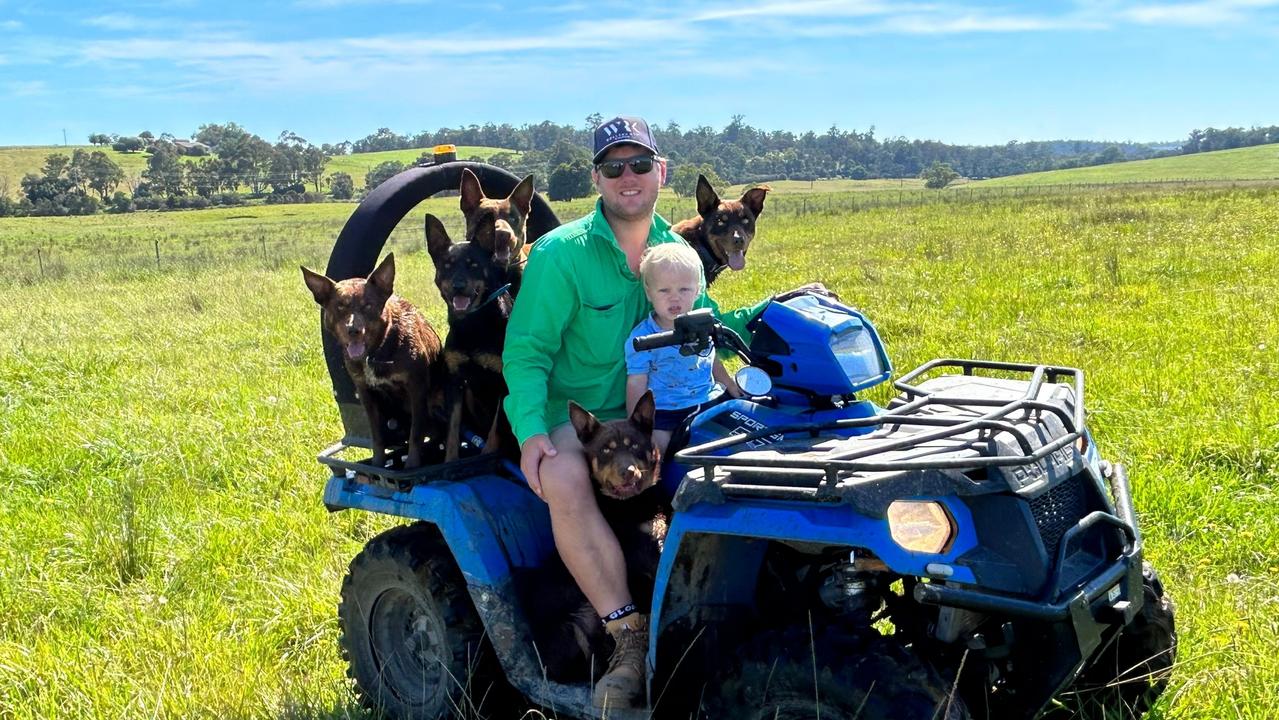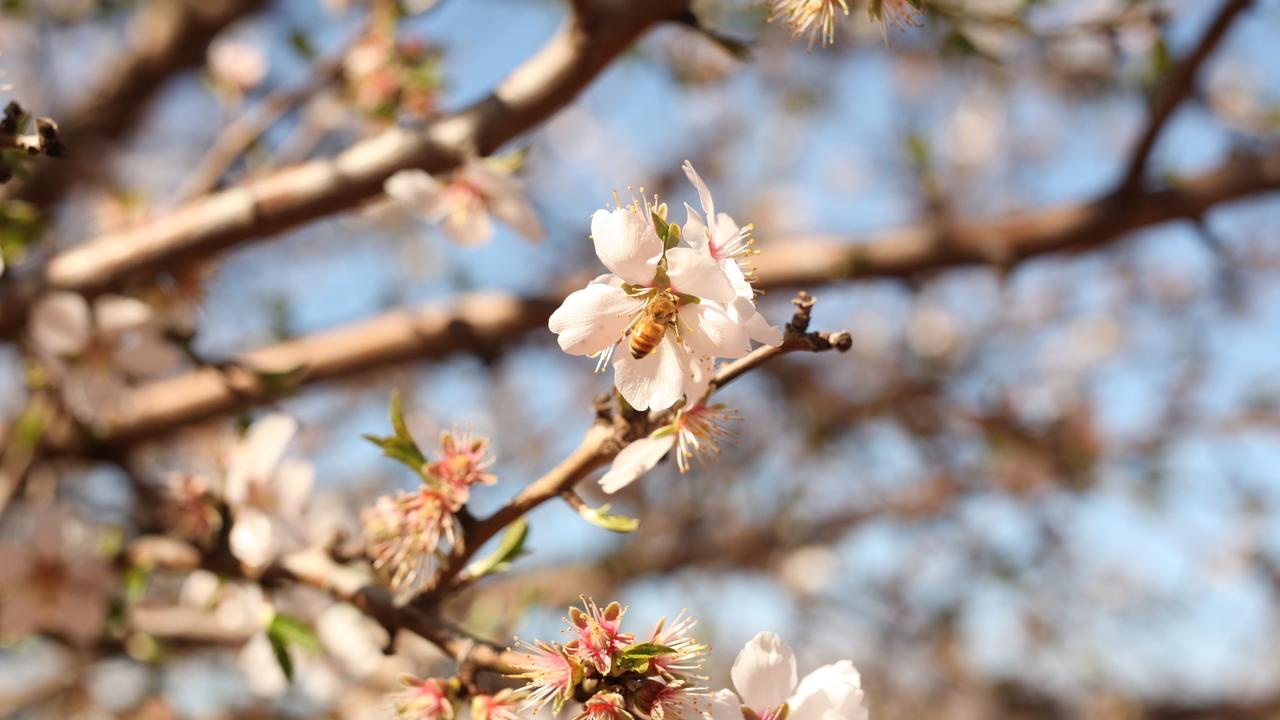Rob and Kirsty Starling have a unique first-cross lamb at Maroona Station
Purchasing four properties in the space of a decade and continuing to sell their lambs at their on-property sale, are measures of the Starling family’s success.
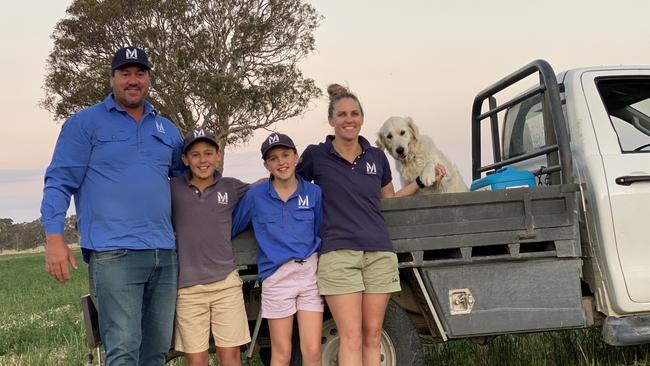
A unique first-cross lamb and a longstanding on-property sheep sale is what sets the Starling family’s Maroona Station apart.
Rob and Kirsty Startling, along with children Jack and Annie, run the 2230ha Maroona Station property at Kingston SE in South Australia.
There they run 5500 Merino ewes to produce 6000 to 6500 first-cross prime lambs a year, grow pasture for hay and silage and run 250 Shorthorn and Shorthorn-Angus breeding cows.
Rob is the fifth generation to farm near Kingston SE, with the original family property first purchased in 1920.
Rob’s parents Allan and Elaine doubled the size of the business in 1979, and after a long period of high interest rates and low commodity prices in the 1990s, they came out the other side and established their annual on-property lamb sale, which has now been going for 33 years.
“The lamb sale has been a massive driver of business and what set us apart,” Rob said.
While Rob came home to the family property in 1999, previously Telang Pastoral Company, he took over from his parents in 2008.
He and Kirsty then grew their holdings exponentially through the 2010s, purchasing four properties in the space of 10 years.
“It was a brilliant opportunity for economies of scale and it allowed us to join the properties together between 2012 and 2019,” he said.
Purchasing more land has lead to a huge infrastructure upgrade in the past five years.
“We developed a 27km laneway system to connect one end of the property to the other, and we can move sheep or cattle from one end to the other,” Rob said.
They have also installed artesian bores with a high pressure two-inch water system throughout the property and built two 1000sq metre undercover sheep handling facilities at each end of the property.
“Good infrastructure has been massively labour saving. It is a long way from one end of the property to the other, so the laneway system has helped a lot.”
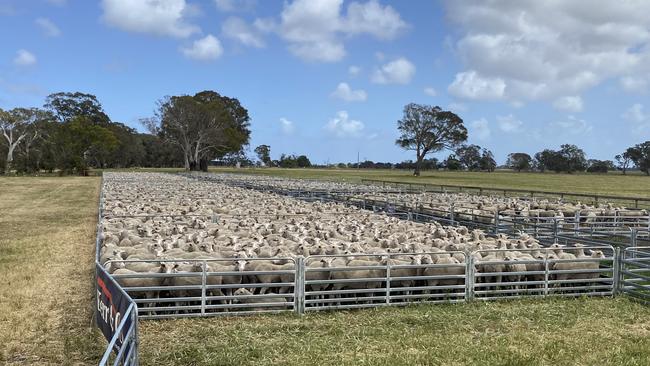
UNIQUE CROSS
The unique sheep cross is something the Starlings are proud of.
Merino ewes are joined to a Border Leicester-East Friesian ram, to produce a first-cross lamb.
Rob said the lamb sale first started in 1992 with a traditional Border Leicester-Merino first-cross lamb.
“We changed the breed mix in 1998 because we realised we could spend so much time, effort and money on milk, fertility and growth in Border Leicesters, but they are traits already done in the East Friesians,” he said.
“The East Friesians are from the Netherlands and were geographically isolated for a number of years. They have the highest milk production of any sheep breed and the milk is packed with protein and fat.”
“We feel the East Friesian breed is a cheat. You can put in all the effort with Border Leicesters but the East Friesian infusion is doing it naturally, for us.”
All Merino ewes were purchased from the same flock, which is a closed flock for biosecurity, for the past 16 years at Coomandook in the South Australian Mallee.
Rob said they buy all of their 1½-year-olds and a fair portion of the 5½-year-olds.
The 5500 Merino ewes had an average of 21 microns and were plain-bodied.
The Starlings also have their own Border Leicester stud, with half of the Border Leicester ewes joined to East Friesian rams to produce their own Border Leicester cross East Friesian rams.
It is then this ram cross that is joined to Merino ewes.
All Border Leicester rams are sourced from Coolawang Border Leicesters at Mundulla, while the East Friesians from Haven Park at Wando Vale.
LAMB SALE
At Maroona they usually produce 6000 to 6500 lambs annually, with most sold at the annual sale.
Rob said the ewe lambs had high milk production, high growth, and increased fertility.
The East Friesian infusion means the ewes can also be joined at a younger age and weight, with some clients of Maroona able to join at 45kg and eight-months-old.
Joining at Maroona was on December 1, for lambing to start on May 1. Merino ewes are joined at 1½-years-old.
“We quite often retain some of the lighter ewe lambs that haven’t made the lamb sale and record a 100 per cent lamb percentage,” Rob said.
Lambs are weaned in August and the average lambs weaned is between 110 per cent to 132 per cent.
Shearing is in September and the lamb sale is the first Friday in November when lambs are five-months-old. This year’s ewe lambs averaged 43kg and wethers 47kg at sale time.
They sold 5000 lambs in total at this year’s sale, with 2360 ewe lambs sold to a top of $261 for an average of $219, while the 2330 wether lambs topped at $174 and averaged $151.
Wool is still a big part of the business, with Merino ewes shorn twice a year, for a total of about 7kg of 21-micron wool. Lambs shorn at four months old, cutting 1.6kg of 23-24 micron wool.
“Over the course of life, the return more than pays for shearing compared to the newer composites which produce 28-35 micron wool and shearing is a burden.”
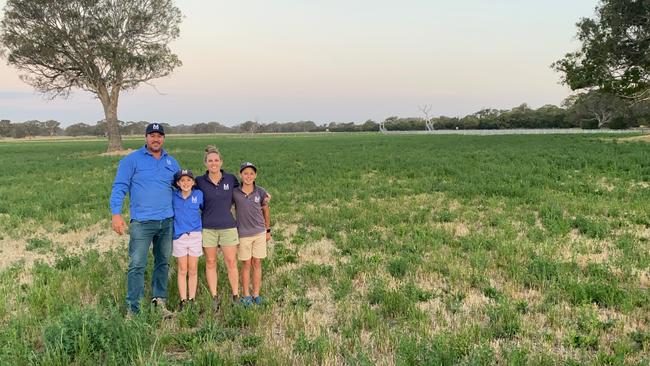
CONDITION SCORE
Looking after the ewes, as they were the producers, was an important aspect of the Maroona operation.
“We really do throw everything at our ewes.”
All ewes are condition score 3.5 or better at joining, regardless of wether there is green grass.
Rob said they then flushed them with barley for two weeks and the results had been “outstanding”.
“I did the Lifetime Ewe Management course in 2014 and the changes we have noticed in the past 10 years have been outstanding.”
“One thing I have noticed too is lambs are born with more wool follicles, which they develop in-utero, and means they cut more wool when shorn at four months old. It then stays with them for life.”
Ewes are pregnancy scanned and identified as carrying a single or twin. The twin bearing ewes are then managed in smaller mobs and their ration adjusted.
“We’ve been doing that the last five years and at helps getting them back into lamb as well.”
“In the last 30 years we have collected lots of mob based data on lambing, and we have noticed a lot of difference in recent years.”
Ewes are then condition scored again pre-lambing and identified as sub-three or plus-three, then they are managed in body condition groups and single or twin groups.
Throughout summer ewes are supplemented with hay and silage throughout in large mobs of over 1000.
But prior to lambing they are broken down in over 40 different mobs for lambing, based on condition score and single or twins.
“We have 40 universal feeders, and we use barley in those during lambing so we don’t have to disturb them,” he said.
RAINFALL IMPACT
With an average annual rainfall of 600mm, Rob said they were conservatively stocked at 10 dry sheep equivalents/ha, to conserve feed and because their biggest risk was water inundation.
“We have a unique property, we have 75 per cent flats, and it does get wet and we can lose paddocks to being underwater.”
This year they had a tough start to the year and were feeding sheep until July, when it turned and they have stopped feeding and are having an above average season. They’ve had 335mm of rain so far this year.
Pastures across the entire farm have been renovated, half with ryegrass and clover based pasture and the other half to perennial ryegrass, phalaris, chicory and subclover.
Fertiliser is applied at 100kg/ha of single super every year.
“The primary driver of production in our soils is phosphorous and we export a lot of lamb, beef or wool off the property, so it is taking a lot of P from the soil. We’ve found long term what you put in, you get back exponentially.”
“We’ve been doing this since the 1950s. My family used to spread super via plane.”
They also produced hay and silage, with some sold locally to subsidise the cost of contracting.
All local contractors were used for shearing, hay making and lamb marking, while they had one full-time employee.
“Something we are proud of is our long-term employees. We had one for 24 years before he retired at 70.
“We are also in a unique spot, close to town, three hours to Adelaide and 15 minutes to the beach, so we have found it easy to attract staff.”
SHORTHORN HERD
The 250 cow herd is made up of Shorthorn cows and Shorthorn-Angus.
The self-replacing herd was producing steers for the European Union market and were turned off at 600-800kg at about 22-months-old.
Some heifers were retained and the excess grown out to the same weight.
The herd was purely grass-fed, with pasture hay fed through autumn and winter.
“We held out adding Angus for a long time, but the market speaks and the popularity of black cattle and access to markets has twisted our arm,” Rob said.
At one point they had 960 cows, but a few years ago sold a lot of cattle and got more into sheep, with the split now 60:40 sheep to cattle.
“We’ve stabilised our numbers now and intend to stay here. The lamb sale is a great thing and we knew we could back ourselves, so we went more with sheep.”
“The first-cross lamb market is really strong and has been for the better part of 30 years
“Cattle have always been there as a steady safety net, but in the last 10 years beef has become the real deal and that market is up there with lamb.”




